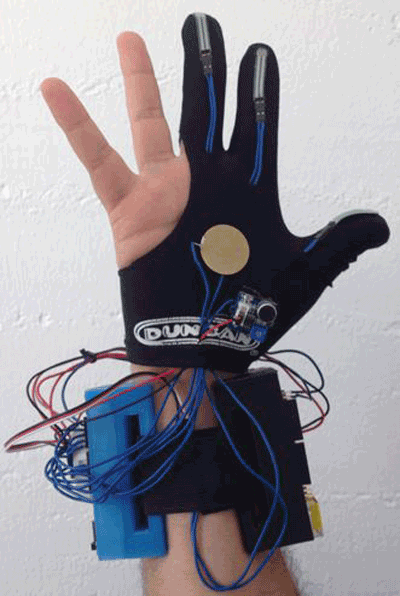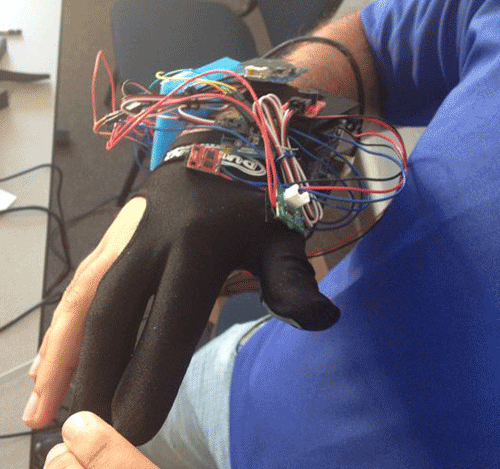Futuristic glove provides touch-based diagnostics
Could have major impact on medical diagnostics in the coming years
Two engineers and a Harvard Medical School student – Elishai Ezra, Fransiska Hadiwidjana, and Andrew Bishara, respectively – have gotten together and come up with a unique diagnostics device that could have a major impact on the medical industry over the next few years.

Med Sensation allows for touch-based diagnostic reporting. The device is called “Med Sensation” and it’s a glove-based technology project spun out of Singularity University’s graduate program that looks to make doctor’s office visits a bit more, well, robotic.
What is Med Sensation?
Med Sensation is a diagnostic glove that seamlessly integrates with the general physical exam as well as other components of patient care. It’s custom-designed with electrical circuits and features a variety of sensors, including accelerometers, temperature, force, sound, and vibration.

Med Sensation is custom designed with electrical circuits.

The glove even features a buzzer system for symptoms that require immediate attention. For example, when a doctor applies too much pressure to an area of examined tissue, a notification will go off telling him / her to ease their grip.
The team has completed the second version of their glove (pictured above) and are already at work on a third iteration, one which will come with micro-ultrasounds on the fingertips to allow for real-time assessment in such diagnostic examinations as heart valve abnormalities, abdominal pain, and more, all without having to go to a medical facility.
The fact that the device works from a glove interface allows for data from the exam to be a component of automated diagnosis. Any and all information that comes from the examination gets wirelessly transmitted to a single communication port using serial data protocol.
Video
The team explains the purpose of Med Sensation and demonstrates how it’s used below:
Plenty of uses
The glove has already proven to be pretty versatile. Some of its uses include:
• Home breast cancer screenings: Med Sensation can detect the size and location of a lump, thus allowing patients to better gauge whether or not they need to see a doctor.
• Can quickly detect everything from an enlarged liver to enlarged lymph nodes.
• Assess internal symptoms like organ pain and heart abnormalities.
The team hopes that Med Sensation’s sensor technologies will be integrated with the already available disposable gloves that are used in hospitals. From there, the first goal is to bring the glove into medical education settings, as this will be the ideal time to teach doctors methods for improving their examination skills. After that, the team hopes to then get the glove into physicians’ hands. Finally, once that’s achieved, the Med Sensation group wants to make a consumer-friendly version that allows people to do a physical exam at home.
Learn more about Med Sensation at medsensation.com ■
Advertisement
Learn more about Electronic Products Magazine





